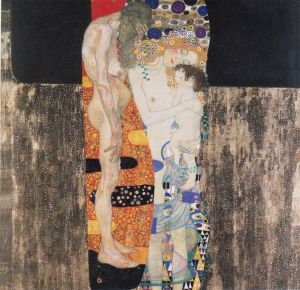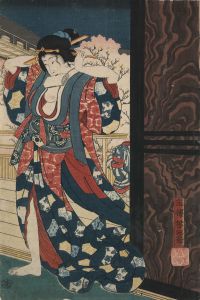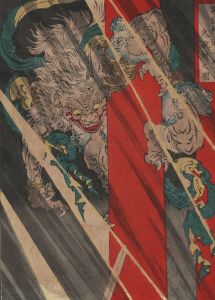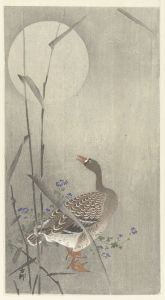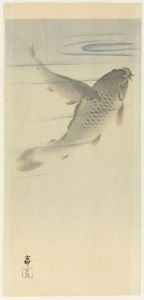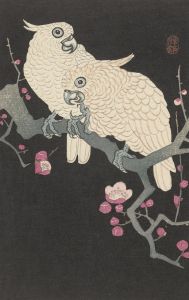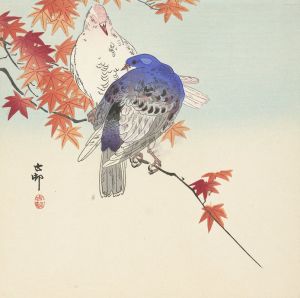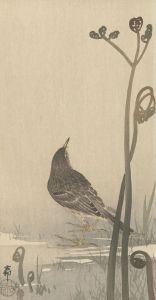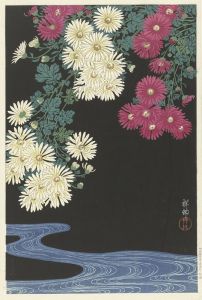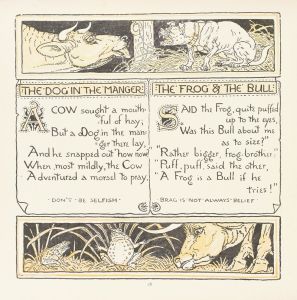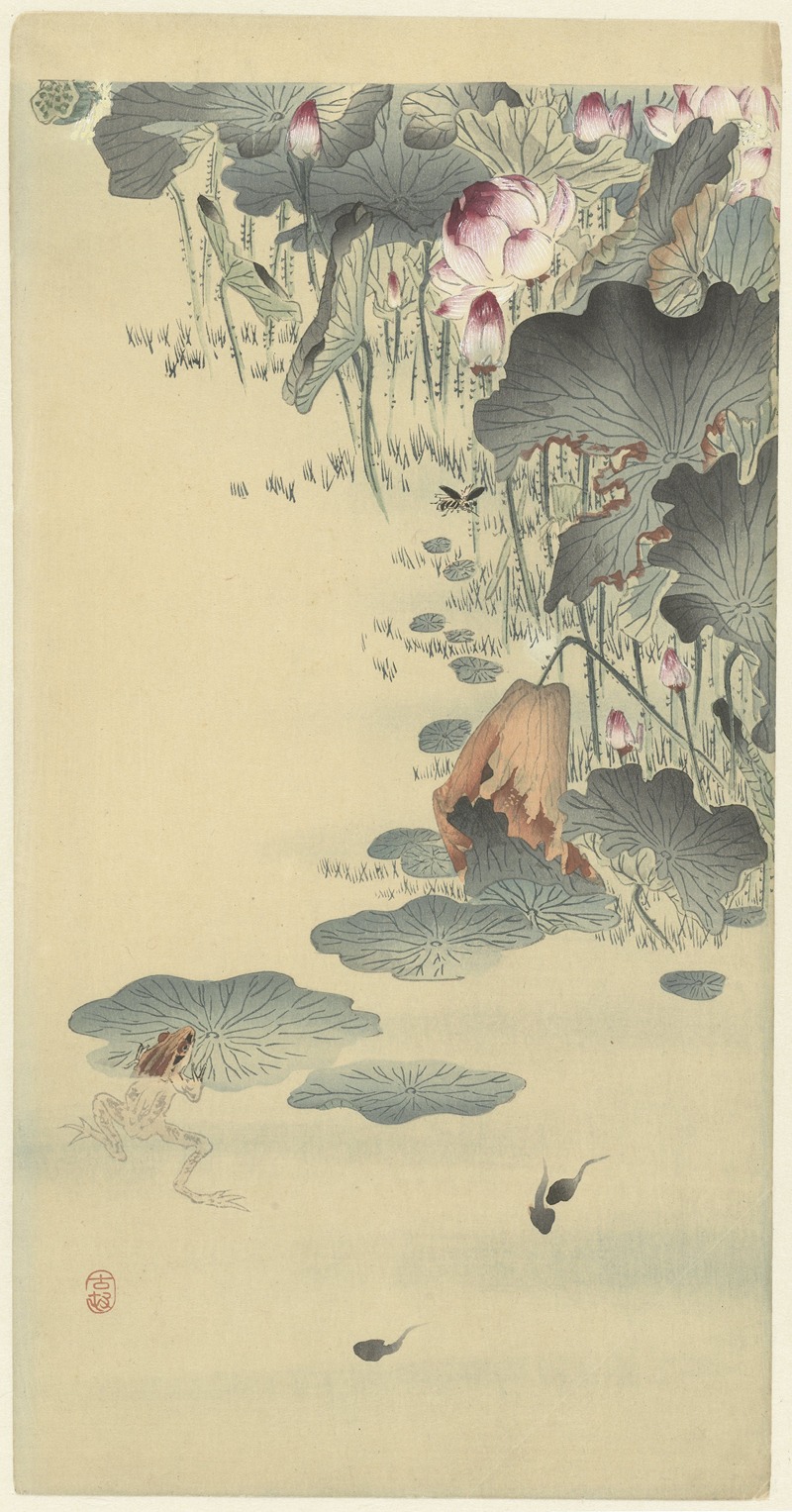
Frog and tadpoles
A hand-painted replica of Ohara Koson’s masterpiece Frog and tadpoles, meticulously crafted by professional artists to capture the true essence of the original. Each piece is created with museum-quality canvas and rare mineral pigments, carefully painted by experienced artists with delicate brushstrokes and rich, layered colors to perfectly recreate the texture of the original artwork. Unlike machine-printed reproductions, this hand-painted version brings the painting to life, infused with the artist’s emotions and skill in every stroke. Whether for personal collection or home decoration, it instantly elevates the artistic atmosphere of any space.
Ohara Koson (1877–1945) was a prominent Japanese artist known for his work in the shin-hanga movement, which revitalized traditional ukiyo-e art with a modern twist during the early 20th century. Koson specialized in kachō-e, or "bird and flower" prints, which often included other elements of nature such as fish, insects, and amphibians. One of his notable works is "Frog and Tadpoles," which exemplifies his skill in capturing the delicate beauty and simplicity of nature.
"Frog and Tadpoles" is a woodblock print that showcases Koson's keen observation of the natural world. The artwork features a serene scene of a frog surrounded by tadpoles in a watery environment. Koson's use of color and composition highlights the tranquility and subtle movements of the amphibians. The frog is depicted with a sense of realism and attention to detail, while the tadpoles are shown in various stages of development, emphasizing the cycle of life.
Koson's work is characterized by its fine lines, soft color palettes, and the ability to convey emotion and atmosphere through minimalistic design. In "Frog and Tadpoles," these elements come together to create a harmonious and peaceful image that invites viewers to appreciate the quiet beauty of nature. The print reflects Koson's mastery of the woodblock printing technique, which involves carving an image into a block of wood, inking it, and pressing it onto paper. This traditional method allows for the creation of multiple copies of the same image, making art more accessible to a wider audience.
The shin-hanga movement, to which Koson contributed significantly, was a response to the decline of ukiyo-e in the late 19th century. It sought to blend traditional Japanese art forms with Western influences, such as the use of perspective and shading, to appeal to both domestic and international audiences. Koson's works, including "Frog and Tadpoles," were particularly popular among Western collectors, who admired the blend of Japanese aesthetics with modern sensibilities.
Koson's prints were often published by Watanabe Shozaburo, a key figure in the shin-hanga movement who played a crucial role in promoting and distributing these artworks. Through Watanabe's efforts, Koson's prints gained international recognition and contributed to the global appreciation of Japanese art.
"Frog and Tadpoles" is a testament to Ohara Koson's ability to capture the essence of nature with elegance and simplicity. His work continues to be celebrated for its artistic merit and its role in the cultural exchange between Japan and the rest of the world during the early 20th century. Koson's legacy endures through his prints, which remain highly sought after by collectors and art enthusiasts alike.





